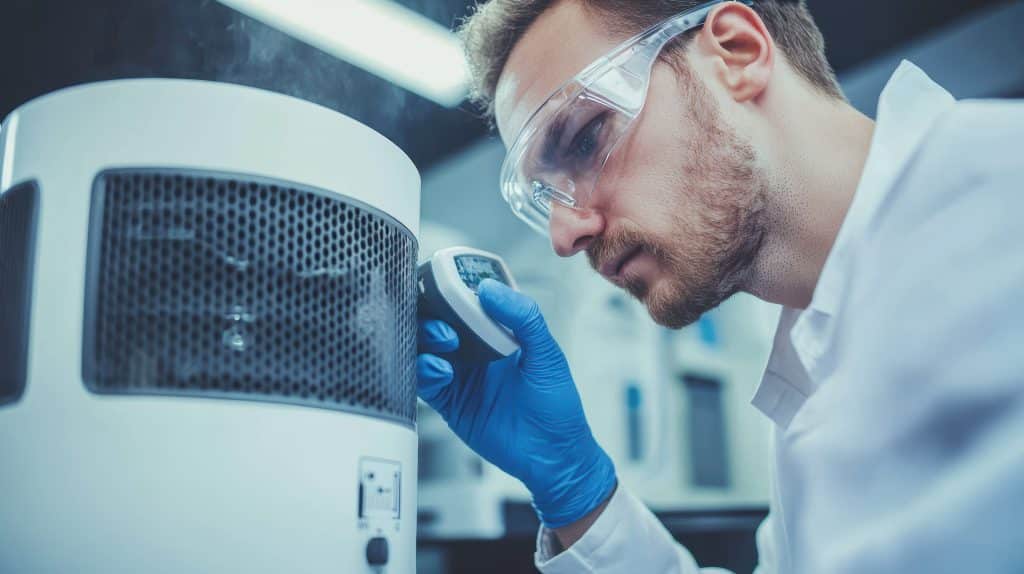Researchers at the National Institute of Standards and Technology (NIST) have developed a new standardized test method to measure potentially harmful by-products released by certain types of air cleaners. While these devices are designed to improve indoor air quality by removing pollutants, some models that use ultraviolet light, ionization, or chemical reactions can also generate unwanted compounds such as ozone, formaldehyde, and ultrafine particles. Until now, there was no consistent way to measure these emissions, making it difficult for consumers, manufacturers, and regulators to assess device safety and effectiveness.
Published through ASTM International, the new consensus standard provides a reliable process for testing air cleaners in controlled environments. The method measures concentrations of ozone and formaldehyde using ultraviolet light absorption, and counts ultrafine particles through advanced particle-sizing technology. By giving all stakeholders a consistent framework, the standard will enable apples-to-apples comparisons between products, help manufacturers improve designs, and support the development of safety limits for indoor air pollutants.
With widespread interest in air cleaning solutions following the pandemic and recent wildfire seasons, this measurement breakthrough comes at a critical time. By making it possible to evaluate both the benefits and by-products of active air cleaners, the new method will guide safer product development and provide consumers with greater confidence in the technologies they choose for their homes.
For the full article, visit the NIST website.

